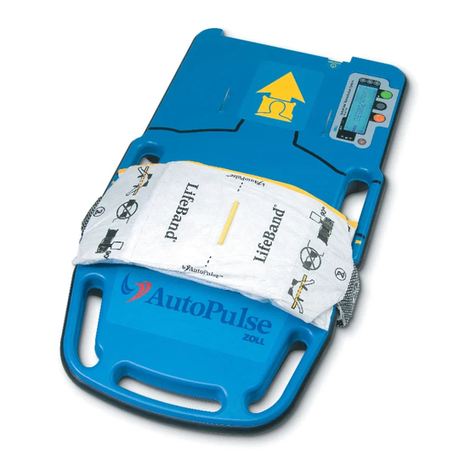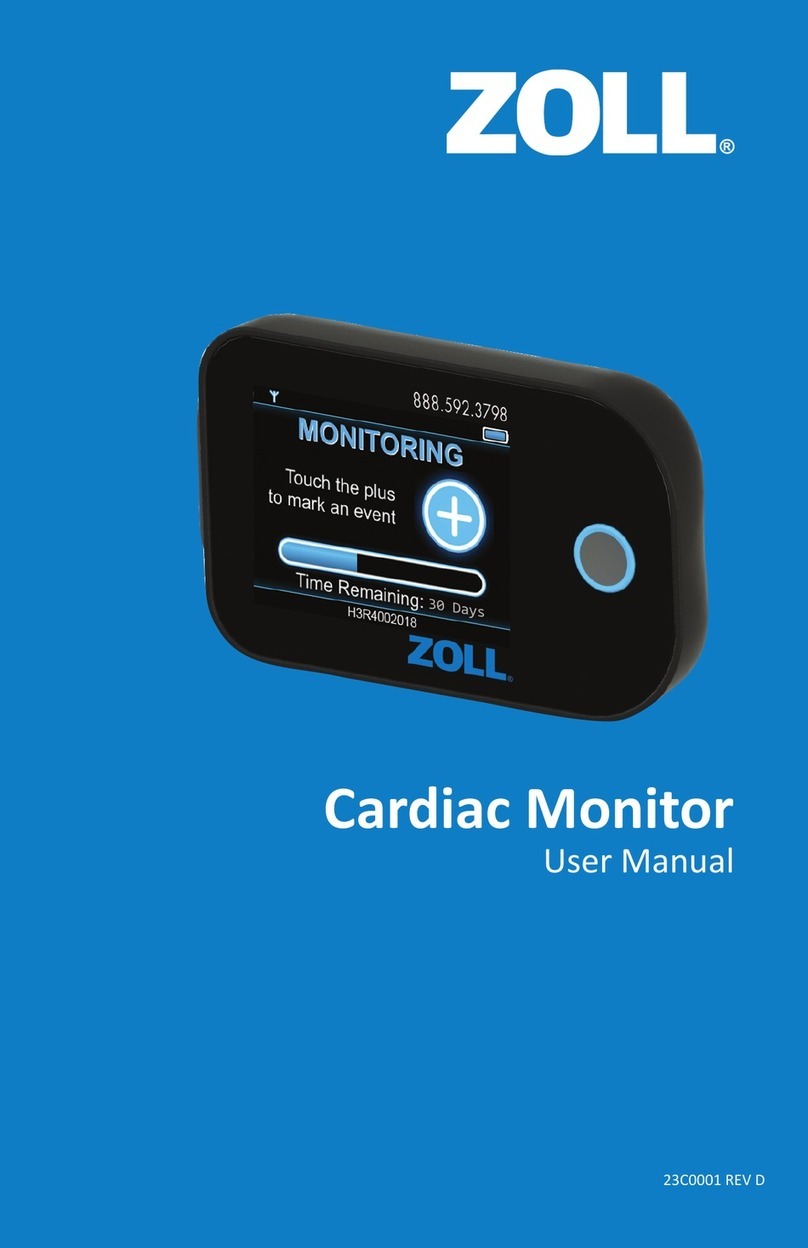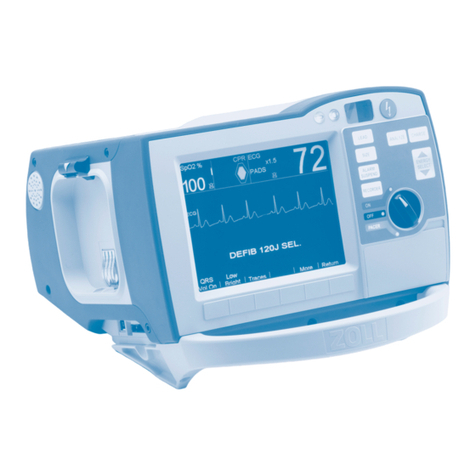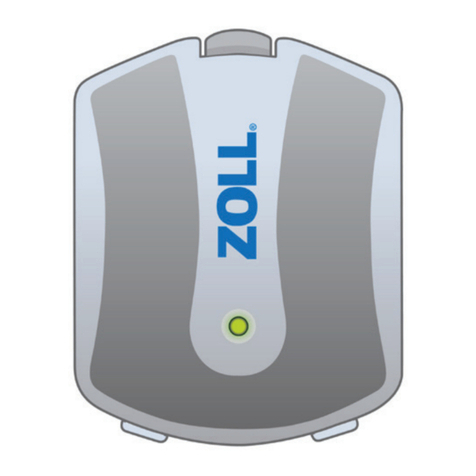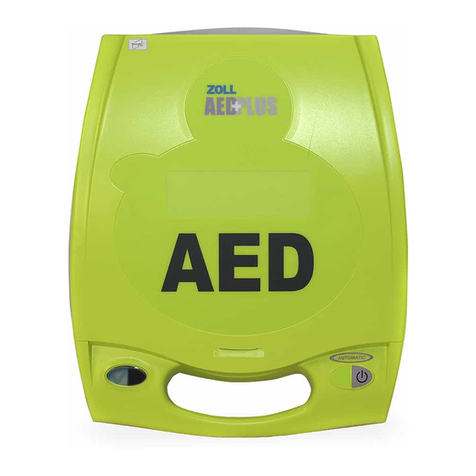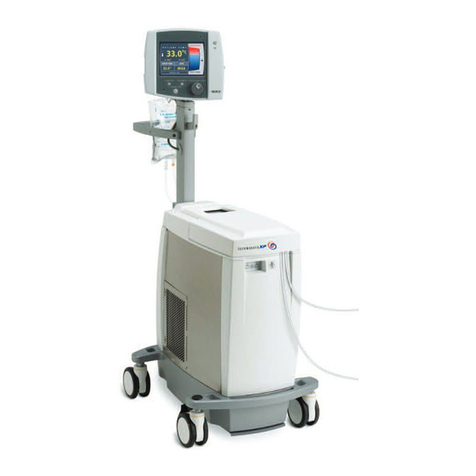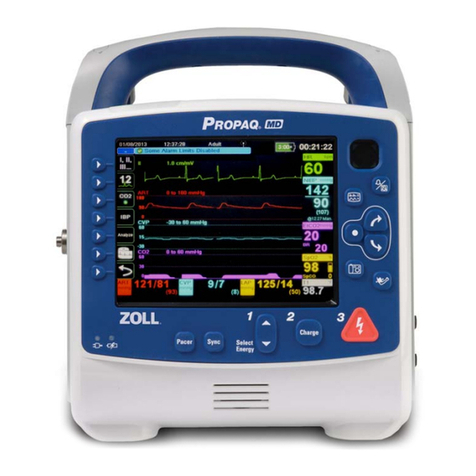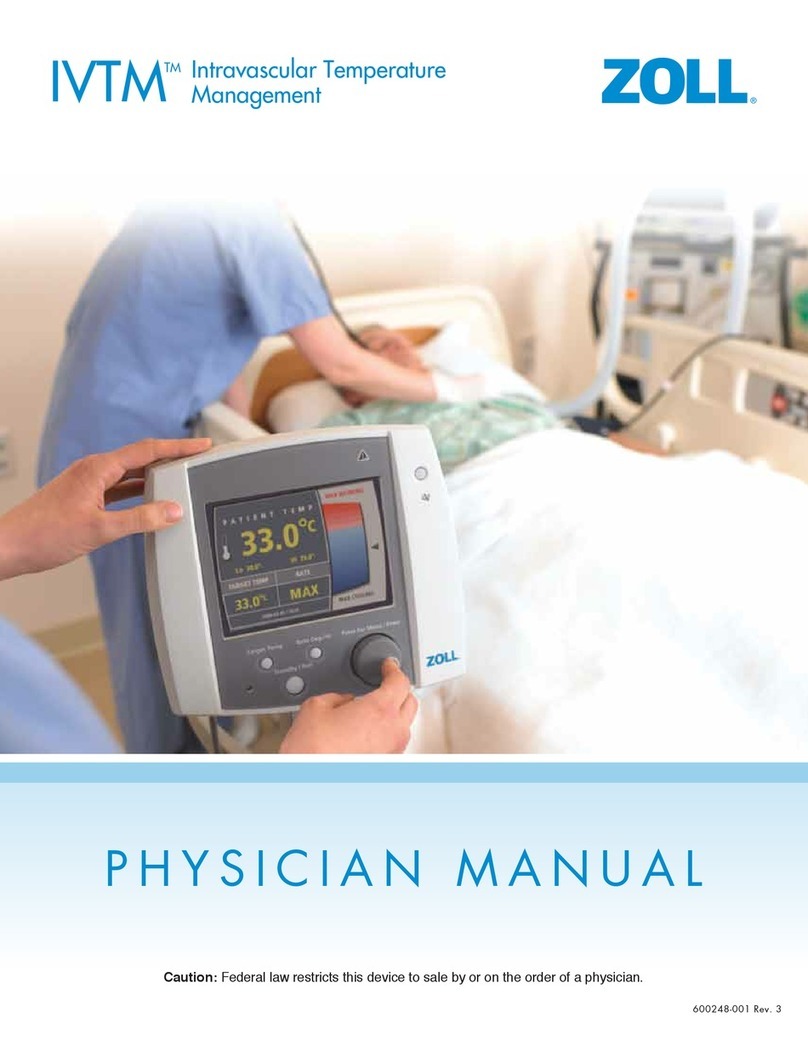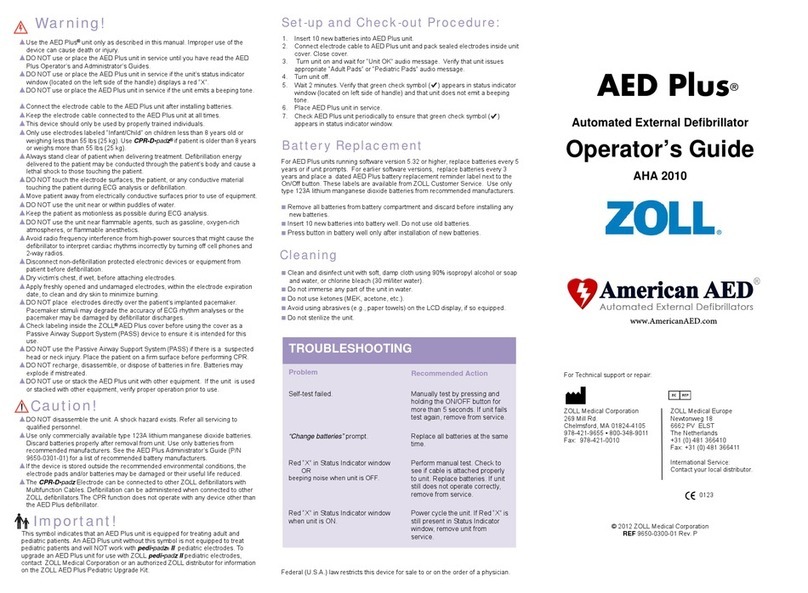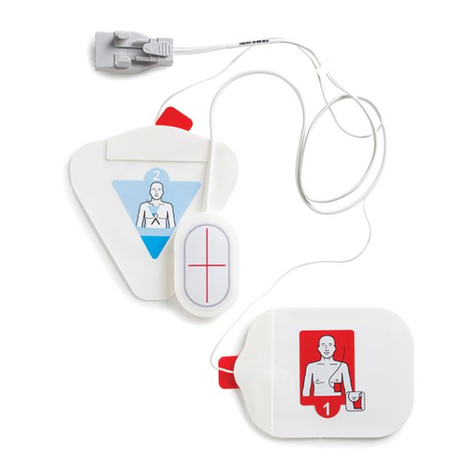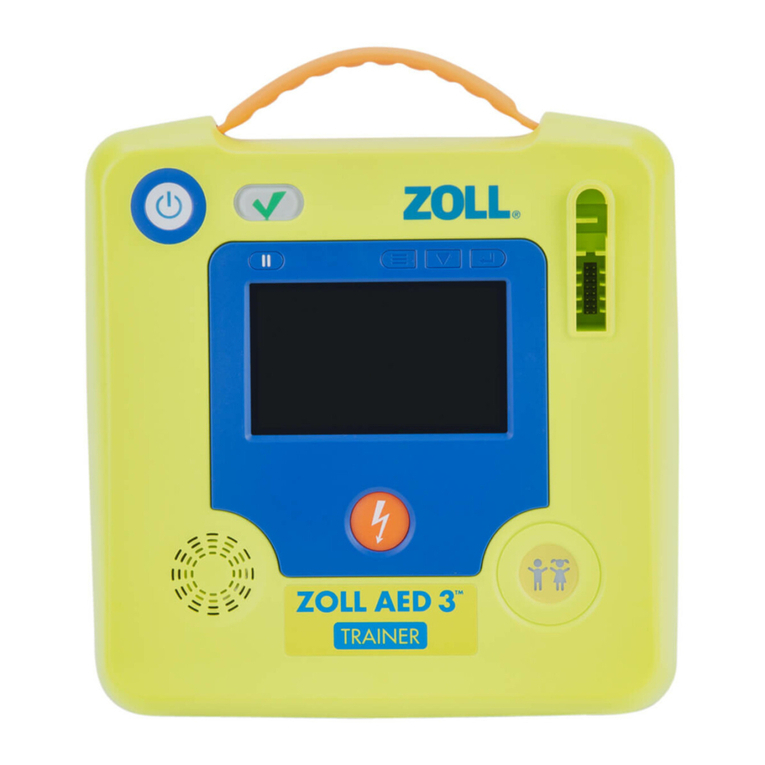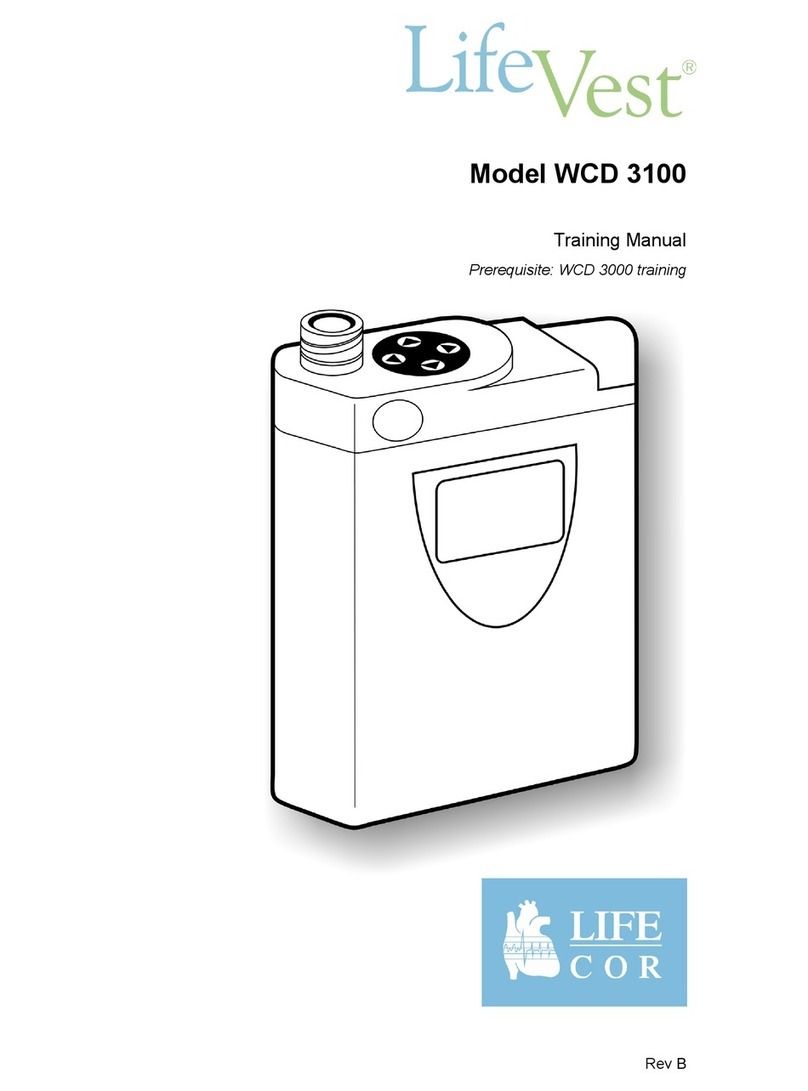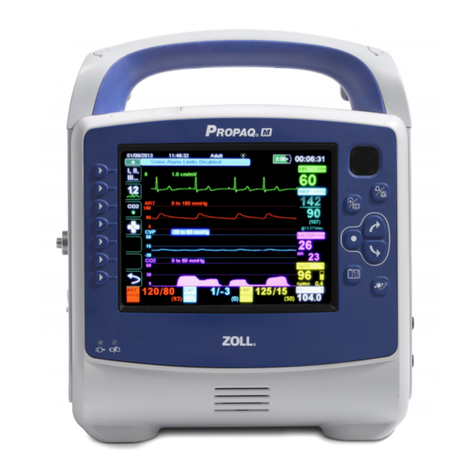
CHAPTER 1GENERAL INFORMATION
1–2 www.zoll.com 9650-0912-06 Rev. G
Real CPR Help®requires the use of OneStep™ CPR electrodes or OneStep Complete
electrodes. When using these pads, the displayed ECG waveforms can be adaptively filtered,
using the See-Thru CPR®feature, to reduce the artifact caused by chest compressions.
The R Series is a Code-Ready®defibrillator. It extends testing beyond shock delivery and
checks more than 40 measures of readiness, including the presence of the correct cables and
electrodes, the type of electrode, and other important electronic functions. The R Series also
verifies the condition and expiration date of OneStep electrodes. This code readiness testing
can occur automatically, without disconnecting electrodes or paddles, or requiring additional
equipment to test shock delivery. The system also provides a printed, or electronic log to alert
hospital personnel of any defibrillator functions or accessories that are compromised in
advance of a code.
Some R Series models include an optional transcutaneous pacemaker consisting of a pulse
generator and ECG sensing circuitry. The pacing option supports both demand and
asynchronous noninvasive pacing for adult, pediatric, or neonatal patients. OneStep Pacing
electrodes and OneStep Complete electrodes allow demand pacing and ECG monitoring
without separate ECG electrodes when the R Series is used with the OneStep Pacing cable.
Information regarding the unit’s operation, ECG, and other physiological waveforms are
displayed on a large 6.5 inch (16.5 cm) diagonal display which provides high contrast and
visibility under virtually all lighting conditions. Operating and warning messages are displayed
on the monitor, and the unit can also be configured with voice prompts to alert the user to unit
status. The R Series performs code readiness testing when the unit is OFF but connected to
AC power, when the defibrillator is initially turned on, and periodically during operation.
An annotating strip chart recorder is included to provide immediate documentation as well as
summary report functions about patient care and treatment.
A sophisticated data collection system, including summary report, printer, and multiple
communication ports is available for this unit. The stored data can be reviewed and archived on
a properly equipped personal computer using ZOLL CodeNet®Central software or ZOLL
RescueNet®Code Review software. R Series data files may be transferred to a PC using USB
or Compact Flash cards or Wi-Fi.
R Series products are intended for use in Manual mode by personnel certified by appropriate
federal, state, or local government authority to provide advanced life support care.
How to Use This Manual
The R Series Operator’s Guide provides information operators need for the safe and effective
use and care of the R Series products. It is important that all persons using this device read and
understand all the information contained within.
Please read thoroughly the safety considerations and warnings section.
Procedures for daily checkout and unit care are located in “Maintenance” on page 12-1.
This manual is supplemented by manual inserts for options available on the R Series. These
inserts contain additional warnings, precautions, and safety-related information.
